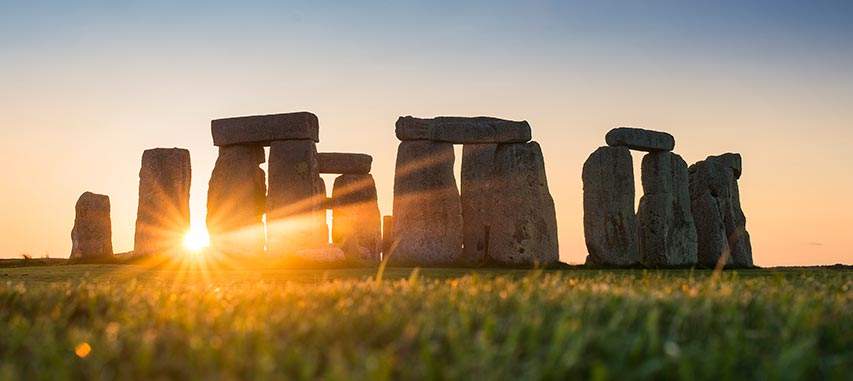Where did the stones with which the ancient Celts made the Stonehenge site come from? It’s a question that many scholars have been asking and that intrigues all those who know about the site: now, a team of scientists (David J. Nash, Jake R. Ciboroski, Stewart Ullyott and Georgios Maniatis of the University of Brighton, Mike Parker Pearson of University College London, Timothy Darvill of Bournemouth University, Susan Greaney of English Heritage and Katy A. Whitaker of Historic England) seems to have finally found the answer to that question. A study published the day before yesterday in the journal Science Advances confirms some of the theories advanced so far by scholars, namely that the large sandstone stones used to build the site, known as sarsen, came from the Marlborough Downs, a flat area of Wessex that lies some 30 kilometers from the site. Fifty-two of what were originally probably Stonehenge’s eighty sarsen remain at the site today. Stones of two types were used to construct the site: in addition to the sarsen there are other, smaller bluestones, for which provenance was previously identified, from the Preseli Hills area in Wales.
Confirmation of the provenance came through the return to England of a stone fragment that had been removed in the 1950s from one of the Stonehenge megaliths as part of some repair work (the lintel had fallen from one of the triliths, and to reset it, the two vertical elements had been drilled out to insert metal pins to strengthen the structure). The fragment was in the possession of a worker involved in the 1958 work, Robert Phillips (now in his nineties), who had kept it until now as a souvenir, and was in Florida: the piece of rock offered Professor Nash a unique opportunity to study the heart of the stones, as had never been done before (today, in fact, drilling into the boulders at Stonehenge is prohibited). The difference with the surface lies in the fact that the inner parts of the stone are obviously not subject to weathering, which alters its chemical composition: studying a fragment of the stone’s interior is like studying the original, unmodified stone.
Chemical analyses were therefore conducted, and the results were used to make comparisons with other stones in the area: it was discovered that the Stonehenge sarsen thus came from a specific spot on the Marlborough Downs, West Woods, which is about a forty-minute drive from Stonehenge. “To be able to find the exact area from which the materials with which the Stonehenge site was built in 2,500 B.C. came,” said Susan Greaney, “is a great thrill. We can now begin to understand how the stones traveled to Stonehenge.”
“To harness 21st-century scientific knowledge to understand the Neolithic and to finally answer a question that archaeologists have debated for centuries,” said Professor Nash, "is really exciting. We were able to analyze the chemical composition of the Stonehenge sarsen using x-ray fluorescence, a noninvasive technique, which showed us that most of the stones have a similar composition most likely came from a single site. We then applied spectroscopy to some sarsen samples from southern England and to some small parts of the Phillips fragment. We found that each sample had a kind of different geochemical signature, and the ability to do analysis on the indented fragment gave us a chance to see what the area of origin of the Stonehenge sarsen was. We are very grateful to the Phillips family for returning the fragment to us."
But the mysteries around Stonehenge are still all to be solved. Now that we understand where the stones came from, there is the question of how the ancient Celts managed to transport them over such a long stretch of road, obviously without modern machinery. And then there are still a couple of sarsen that, not sharing chemical composition with the others, have an unknown origin. In addition, the functions of the site remain to be clarified. In short: a very important discovery has been made about Stonehenge, but that does not diminish its appeal. On the contrary: we have extra keys to better understand these precious monuments of antiquity.
 |
| One of the mysteries of Stonehenge solved: we now know where the stones came from |
Warning: the translation into English of the original Italian article was created using automatic tools. We undertake to review all articles, but we do not guarantee the total absence of inaccuracies in the translation due to the program. You can find the original by clicking on the ITA button. If you find any mistake,please contact us.